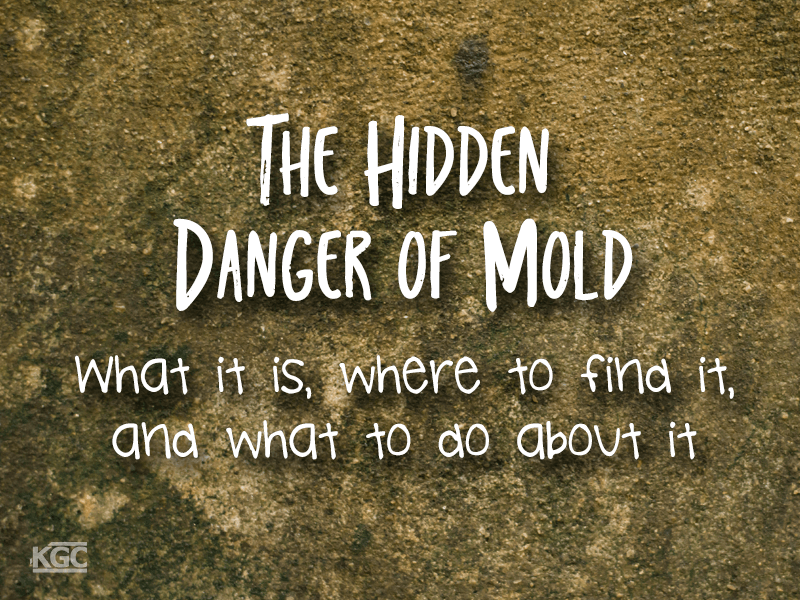Winter in Oregon can be a tough time for many living species, but for mold, wet winter months are the perfect conditions for the growth of dangerous mold spores.
Mold loves damp, wet places, and thrives in these humid conditions, quickly infecting your home.
Mold isn’t just unsightly (and smelly!): mold can grow undetected for years and slowly eat away at your home’s internal structures, affecting their integrity and destroying your home bit by bit.
More dangerously, some types of mold can produce mycotoxins that are toxic and can trigger several health issues, such as asthma, allergies, sinus infections, and headaches, warns the Center for Disease Control and Prevention.
Preventing mold from growing is the best way to keep your health and homes strong and healthy. Keep reading to find out what you can do to prevent mold infestation in your home.
What is mold?
Mold is a generic name for all sorts of fungi that grow and multiply: it only needs moisture and a food source like wood to grow.
In nature, mold serves a useful purpose: decomposition. However, in the home, mold can be dangerous for humans and damage your home structurally and aesthetically.
Many homes in Oregon have water damage from our wet seasons, and this provides ideal conditions for mold to grow. The small spores of mold quickly reproduce and drift through the air and around your home, and potentially into your lungs.
You may see ugly patches of black, brown, pink, or green growths on shower doors, walls, or other visible areas—or you may not be aware at all that mold is growing in your attic, behind the walls, or under your carpets.
Finding mold: 5 signs to look for
1. Uneven or poor attic insulation
Uneven, bulgy insulation in your attic can indicate the presence of water damage from roof leaks, and this can create perfect conditions for mold.
If your attic air circulation and insulation is poor, you won’t have proper ventilation and mold is likely to grow.
Mold spores can travel through very small openings, and can make their way from the attic down to the rest of the house. If you spot water leaks in your attic, it’s important to get them fixed before mold takes over.
2. Soft, spongy floorboards
You know that feeling in old houses when the wooden floorboards seem to give way under your feet?
It’s likely that a soft, spongy area on hardwood floors indicated rotten wood, which will need to be replaced. If you don’t replace spongy, wet floorboards, mold can continue to grow and spread.
3. Bubbling paint on walls
Have you ever noticed how paint seems to ‘bubble’ sometimes on a wall? This usually indicates water damage and internal moisture in the wall.
Painting over the bubbles won’t solve the problem: you need to find the source of the leak and fix it, and then remove the mold.
4. Visible signs of mold
Look carefully at walls, windows, and floorboards. Mold is commonly found in bathrooms, laundry rooms, and other areas where moisture is likely to become trapped.
Mold and mildew are often confused: the type of mold you have will determine how you get rid of it.
Mold can grow in patches that penetrate the surface of the material it’s growing on. Mold can be black, green, pink or other colors and tends to grow on walls and inside permanent structures. It’s fuzzy and slimy, with irregular shaped spots.
Mildew, on the other hand, is powdery, white or grey, smells strongly, and tends to grow on organic surfaces and materials. Mildew (a type of mold) typically remains flat on the surface of the material.
5. Unexplained physical symptoms
Have a persistent sinus infection, coughing, or itchy throat or eyes, and it just doesn’t seem to go away? If you’ve consulted a doctor and your condition isn’t improving, consider the possibility that your health issues are being caused by mold.
Make an inspection of your house, call in a professional if you need to, and mention the possible presence of mold in your home to your doctor.
How to get rid of mold
Mold is everywhere, but you can make your home inhospitable to it.
- Fix water leaks as soon as you spot them and remove sources of excess moisture
- Install a strong vent or fan in the bathroom (and remember to use it when showering)
- Open windows when cooking and for 10-15 minutes every day if possible
- Immediately dry and remove wet carpets, fabrics, furniture, and curtains
- Make sure you have adequate ventilation in all rooms of your home
- Clean out your gutters regularly to prevent leaks
- Inspect your walls, attic, crawl spaces, and roof regularly for signs of moisture
- Keep a little space between your furniture and the wall so air can pass between them
- Use your air conditioning in humid weather and your heating in cold seasons
Call in the professionals
You can remove small amounts of mold and mildew with bleach and water (wear protective gear), but larger areas will have to be removed by professionals.
Check out the Oregon government factsheet or the Oregon Mold in Your Home FAQ to find out more or contact us at Keith Green Construction to find out how we can help prevent mold growth in your home.


